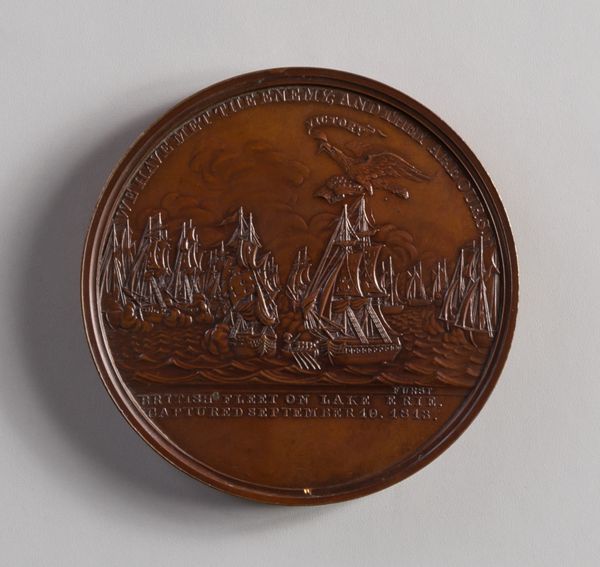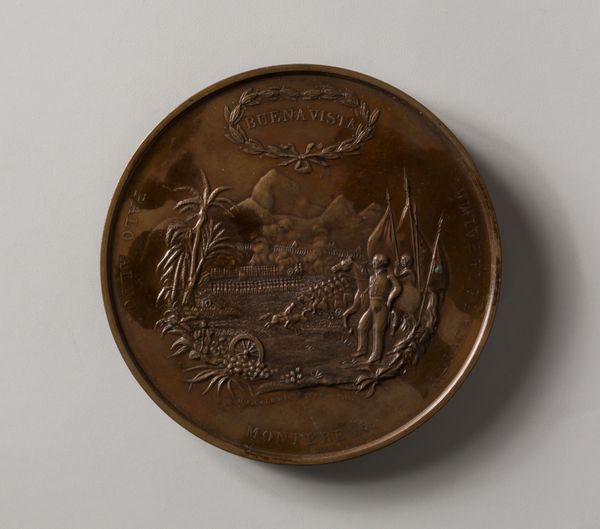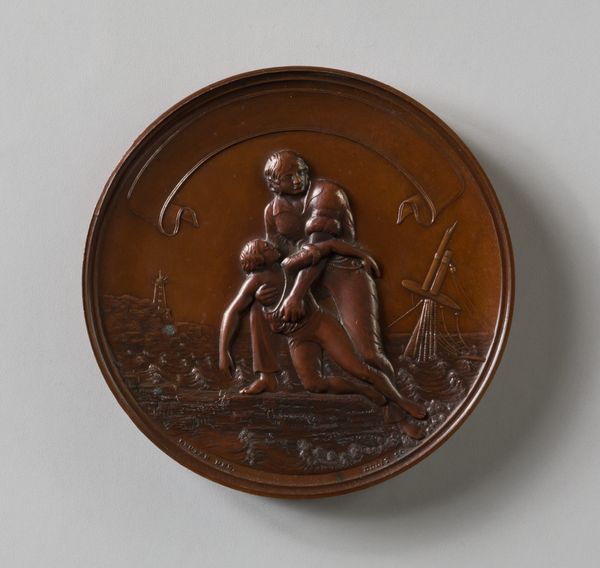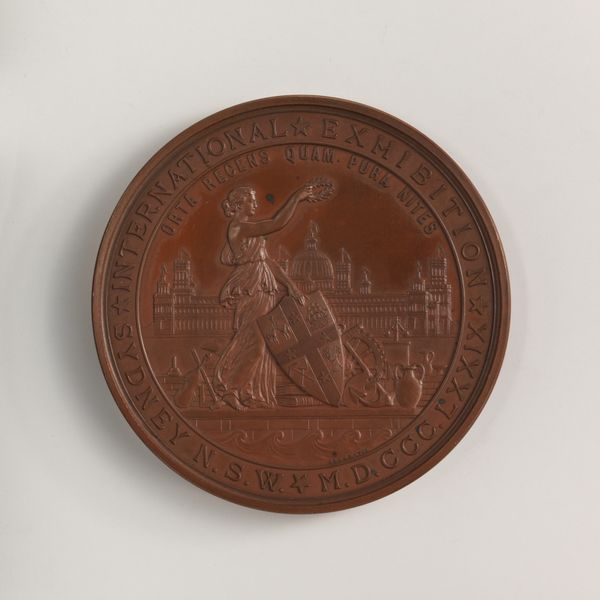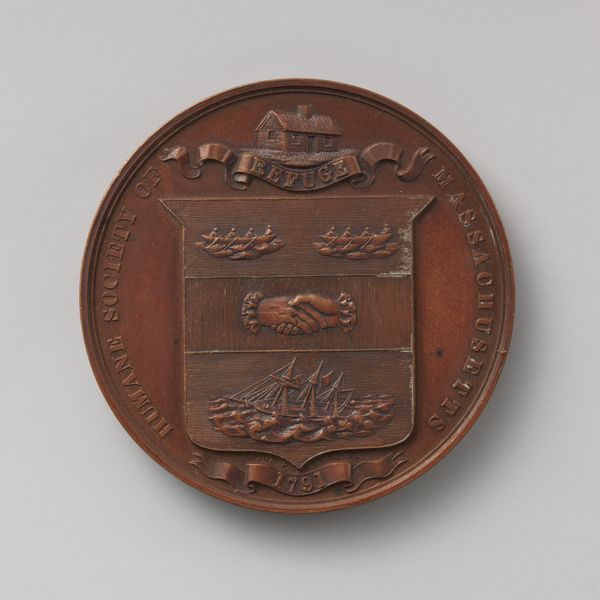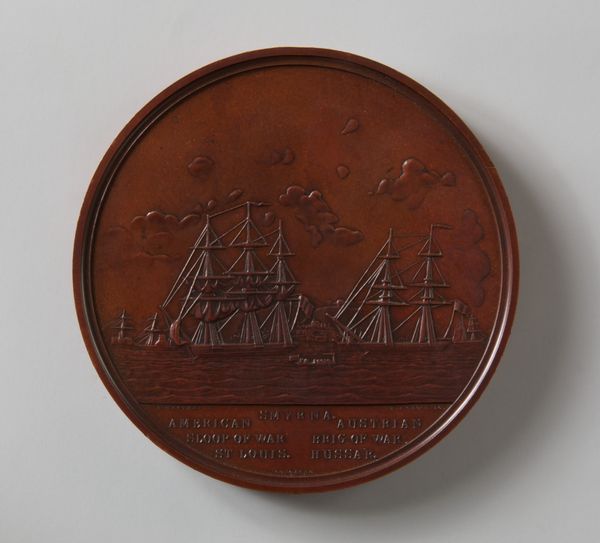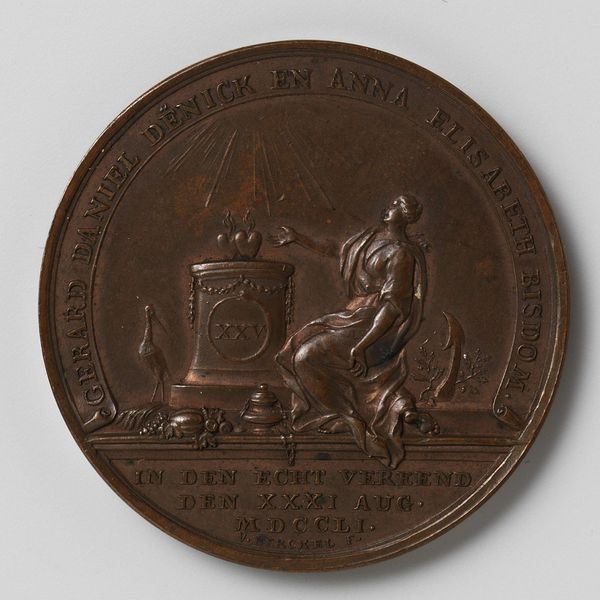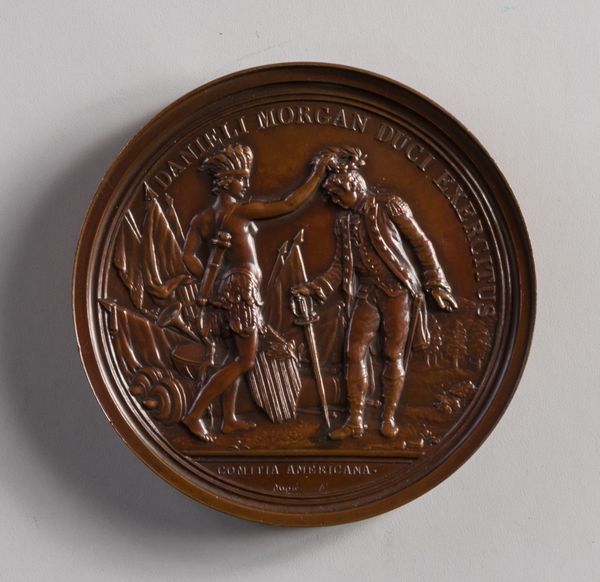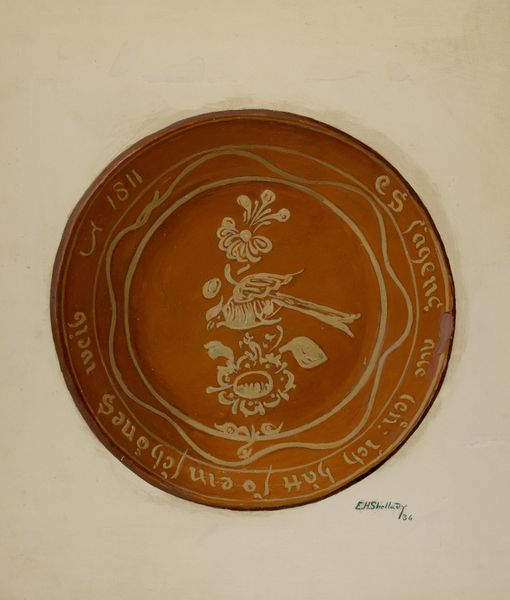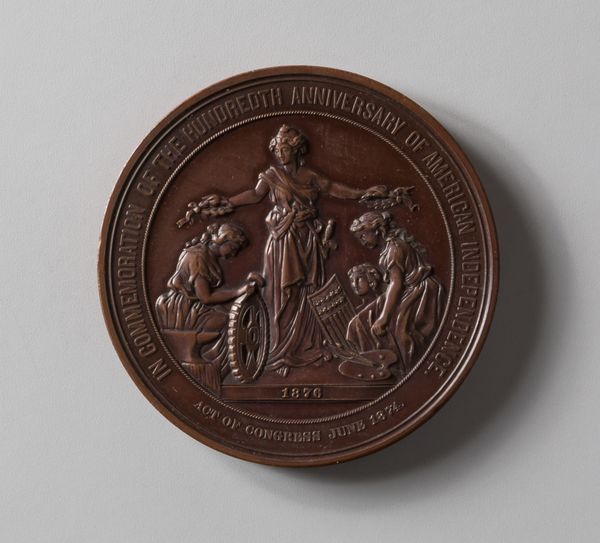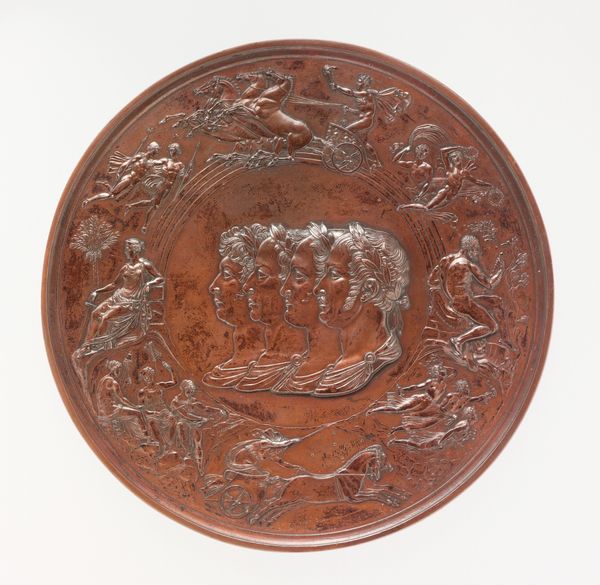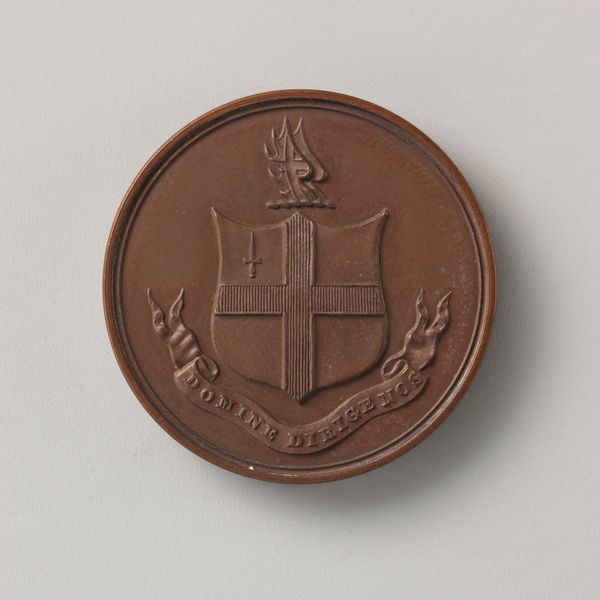
Medal in Memory of Lieutenant William Burrows 1800 - 1830
0:00
0:00
print, metal, bronze, sculpture
#
portrait
#
neoclacissism
# print
#
metal
#
bronze
#
sculpture
#
ceramic
#
united-states
#
earthenware
#
history-painting
Dimensions: Diam. 2 1/2 in. (6.4 cm)
Copyright: Public Domain
Editor: This is the "Medal in Memory of Lieutenant William Burrows" made sometime between 1800 and 1830 by Moritz Fürst. It appears to be made of bronze, a surprisingly common artistic material. What's striking is how it elevates a military figure through what seems to be mass production, and it begs the question, what's the story here? What can you tell me about this work? Curator: Look at the strategic use of bronze: an inexpensive yet durable material, ideally suited to produce many copies honoring this Lieutenant. This object becomes a symbol of both individual heroism and state power, distributed widely. Notice, too, the classical urn; it speaks to the neoclassical style that dominated the time. How does that play into the intended consumption of this medal? Editor: So, the choice of bronze, usually reserved for more... high-end art, helps spread a political message and elevates Lieutenant Burrows within a popular, accessible format. Does that contradict traditional notions of art being unique and precious? Curator: Exactly! The very act of reproduction democratizes the commemorative process. It suggests a shift from elite patronage to a broader, more public form of memorialization. The medal itself becomes a commodity in a way, consumed and circulated as a token of patriotic sentiment. How might the context of its production and consumption influenced its style, do you think? Editor: I see it now – the controlled style aligns with a specific kind of public grief and national pride. Thanks, it's fascinating how materials and distribution become such central parts of understanding the meaning of a piece like this. Curator: Precisely. By considering its material existence and journey, we uncover the social forces that shaped not just its creation but also its lasting impact. It certainly makes me rethink "traditional" art boundaries.
Comments
No comments
Be the first to comment and join the conversation on the ultimate creative platform.
